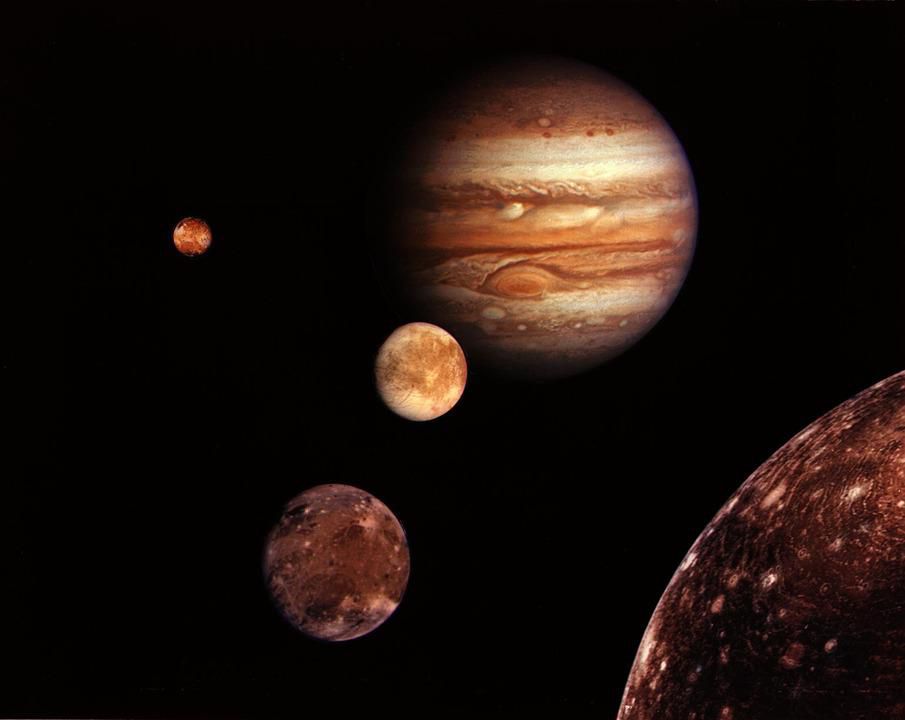One of the most perspective worlds in the Solar System to search for alien life is Jupiter's moon Europe, largely because there it is a huge liquid ocean located under a layer of ice.
Despite the fact that the diameter of Europe is only one-fourth of the diameter of the Earth, there may be twice as much water in its ocean as in the oceans of our planet combined. And everyone knows that where there is water, there is a chance of life.
But of course, the detection of any alien life on Europe is an extremely difficult task. It is believed that the thickness of the Moon's ice shell hesitates from 10 to 15 miles. The longest distance people have ever dug in the Ground is 7.67 miles.
Nevertheless, everything may not be as difficult as we think. A new study published on Tuesday in Nature Communications features that the ice shell itself may be much more porous than previously was thought. Ice may be a home to a large number of pockets of water that can also support life.
What is the signature to these discoveries? Greenland. New information collected by ice-penetrating radar reveals the formation of a “double ridge” in the Greenland ice sheet - features that also exist on Europe.

The scientists who wrote the new article believe that the mechanism of formation of these double ridges in Greenland should be applicable to Europe, which supposes that there may be more fluid water on Jupiter's moon than we could imagine.
“It was really a bit of serendipity,” Riley Culberg, an electrical engineer receiving a PhD at Stanford University who managed the modern research, told The Daily Beast. “One of my colleagues on this paper, who is a planetary scientist, was giving a presentation on the big open questions in Europa science and showed a picture of these double ridges on the surface. It struck me that I had seen a similar looking feature in my own data from Earth while working on a totally different project related to climate change impacts on the Greenland ice sheet.”
Culberg’s associates and he returned to data about Europa and espied that double ridges on the Jovian moon (first observed in the 1990s by NASA’s Galileo mission) demonstrate a peculiar kind of correlation between the ridges’ height and the distance between the two peaks.
The team understood that the Greenland scores had an almost similar correlation as well. And this discovery meant the double ridges seemed to form similarly in both places.
It is known that double ridges were formed in Greenland when ice cracked around envelopes of compressed liquid water, which repeatedly froze inside the ice sheet and leads to the appearance of two peaks of a certain shape. These water depressions are shallow and help make the ice sheet more porous.
Scientists suggest that the same mechanism explains the double ridges on Europe. And this means that the ice shell is permeable, dynamic and, possibly, abounds in shallow reservoirs with liquid water.
“If the double ridges of Europe are also forming in this way, it suggests that shallow water pockets must have been, or perhaps still are, extremely common in the ice shell,” Culberg said. “Double ridges are by far the most common surface we see in images from Europe, so if they form over water, they really should be everywhere in the ice shell.” And this means that there are all possibilities for the development of life on the moon of Jupiter.
However, Culberg warned that we will not be able to confirm any of this until we have the opportunity to study Europe directly. Perhaps it will happen in the next decade: NASA plans to launch an orbiting probe called Europe Clipper in October 2024, and it is scheduled to arrive on Europe in April 2030.
It will have ice-penetrating radar, with the help of which it will be possible to learn much more about the ice shell of Europe, and we will be able to understand whether Europe really has the capacity to support life in our Solar System.









